The education industry in Europe is undergoing a digital transformation. With classrooms expanding beyond physical boundaries and hybrid learning becoming the norm, educators are continuously seeking tools to keep students engaged, informed, and motivated. In this environment, one medium is rising above the rest: explainer videos. Affordable, effective, and visually captivating, explainer videos boost engagement in ways that textbooks and lectures simply cannot.
From digital classrooms in Scandinavia to university platforms in Germany and EdTech startups in France, explainer videos are becoming the cornerstone of effective educational communication. They simplify complex topics, adapt to various learning styles, and provide on-demand learning support. This blog explores how the best explainer videos boost engagement across Europe’s diverse education landscape and why every institution, educator, and learning platform should be investing in them.
The Changing Face of Education in Europe
The European education system is known for its diversity, with each country having unique curricula, teaching styles, and technological readiness. Yet, one thing is consistent across all nations: the need for better student engagement. Whether it’s secondary schools in Spain or universities in the Netherlands, institutions are grappling with distracted learners, declining attention spans, and a growing need to make content more accessible and inclusive.
In this context, traditional methods of teaching textbooks, static slides, and long-form lectures are no longer enough. Students expect clarity, speed, and interactivity. They learn better when information is visual, concise, and presented in a story-driven format.
That’s where explainer videos boost engagement. These short, animated or live-action videos break down complex topics into digestible narratives, making learning more effective and enjoyable.
What Makes Explainer Videos So Effective?
At their core, explainer videos combine visuals, narration, and motion to explain a concept, process, or idea. Typically lasting between 60 seconds and 5 minutes, they are designed to deliver value quickly and clearly.
In education, this format aligns perfectly with cognitive learning theories. The brain processes visuals 60,000 times faster than text. When learners see and hear information simultaneously, retention rates rise significantly. Explainer videos leverage this dual-channel input, improving comprehension and recall.
When students are engaged, they learn faster and perform better. That’s the most direct way explainer videos boost engagement, especially when integrated into course content, digital platforms, or revision modules.
Simplifying Complex Topics Across Subjects
One of the biggest barriers to learning is complexity. Whether it’s understanding Newton’s Laws, the structure of the European Union, or the causes of World War I, students often struggle with abstract or dense topics.
Explainer videos make the complex simple. A three-minute animated video can demonstrate how photosynthesis works, complete with diagrams, voiceover, and motion that brings the process to life. Similarly, economic models, mathematical equations, or historical events can be visualized in ways that textbooks cannot match.
In multilingual regions such as Belgium or Switzerland, explainer videos also offer an easy way to provide content in multiple languages expanding access and comprehension.
By doing so, explainer videos boost engagement not just by entertaining students, but by making difficult content easier to understand and retain.
Supporting Diverse Learning Styles
Europe’s classrooms are more diverse than ever. From neurodivergent learners to students with language barriers, educators need to cater to a broad spectrum of needs. Standard lecture-based methods cater mainly to auditory learners, leaving out those who thrive on visual or kinetic input.
Explainer videos bridge this gap. Visual learners benefit from animation and diagrams, while auditory learners absorb the information through narration. For kinesthetic learners, interactive explainer videos with clickable elements or gamified features offer engagement beyond passive watching.
In inclusive classrooms across Europe, this adaptability is vital. It ensures no student is left behind and shows how explainer videos boost engagement by aligning with how different students absorb information best.
Enhancing Online and Blended Learning Environments
Remote and hybrid learning models are here to stay. Whether due to infrastructure challenges, global crises, or changing learning preferences, schools and universities across Europe are investing in online learning platforms.
However, the success of these platforms depends on content that captures and holds attention. Recorded lectures often fall flat, leading to low completion rates. Explainer videos, on the other hand, provide concise, focused learning experiences that are tailor-made for digital consumption.
When integrated into LMS platforms like Moodle, Canvas, or Blackboard, explainer videos serve as anchor content helping students understand concepts before class (flipped classroom model), during lessons, or as post-lecture revision aids.
It’s in these digital environments that explainer videos boost engagement most powerfully, offering self-paced learning that supports both independence and clarity.
Building Emotional Connection and Motivation
Learning isn’t just cognitive it’s emotional. Students engage more with content when it feels relevant, fun, or emotionally resonant. Explainer videos offer educators the ability to tell stories that humanize content.
For instance, instead of just teaching about climate change through facts and charts, an explainer video can show the journey of a child growing up in a flood-prone area connecting the science to real-life impact. In language classes, videos can animate cultural anecdotes or idiomatic expressions, making them more memorable.
This emotional layer creates an immersive experience that students respond to. In regions like Scandinavia, where emotional intelligence is emphasized in education, this approach fits naturally into curricula.
By tapping into emotion and storytelling, explainer videos boost engagement in ways static media never can.
Supporting Teachers and Reducing Workload
Teachers across Europe face mounting workloads. Between lesson planning, grading, administrative work, and hybrid teaching, burnout is a growing concern. Explainer videos offer practical relief.
Pre-made explainer videos can supplement lesson plans, allowing educators to focus more on interaction and less on repetition. In flipped classrooms, teachers assign explainer videos for homework, and use class time for discussions and problem-solving.
Custom videos also allow teachers to reuse content year after year, saving time in curriculum delivery. With growing access to tools and platforms for creating or sourcing explainer videos, educators can build a library of resources that evolve with their syllabus.
Here too, explainer videos boost engagement not only for students, but also for teachers empowering them with tools that make teaching more efficient and creative.
Measuring Learning Outcomes and Engagement
Unlike textbooks or lectures, explainer videos offer measurable data. When used on digital platforms, educators can track views, completion rates, pause points, and engagement spikes. This feedback helps in understanding which topics are difficult or where students drop off.
In European institutions that rely on learning analytics for improving educational strategies, this data is gold. Schools and universities can use it to refine content, personalize learning paths, or adjust teaching methods.
That level of insight proves how explainer videos boost engagement not just in theory but in measurable, actionable ways.
Making Education Accessible Across Borders
Europe is home to hundreds of universities and EdTech companies reaching international students. Language diversity, varying academic standards, and cross-border delivery make educational communication more complex.
Explainer videos help unify this experience. They can be subtitled, translated, or culturally adapted for different markets allowing schools to reach students in France, Germany, Italy, and beyond with a single, well-crafted asset.
This scalability supports online course providers like Coursera, FutureLearn, or EDX, which serve European learners with multilingual content. With motion graphics, brands can also maintain a strong visual identity that makes learning platforms feel trustworthy and modern.
In this way, explainer videos boost engagement across national lines, bridging learners through shared, simplified storytelling.
Integrating with Social Media and Microlearning Trends
European students today are digital natives. Their content consumption habits are shaped by Instagram Reels, TikToks, and YouTube Shorts. To meet them where they are, educational content must also evolve.
Short-form explainer videos adapted for social media serve as powerful microlearning tools. A 30-second animation explaining the Pythagorean Theorem or the basics of GDPR compliance can spark curiosity and drive traffic to full-length courses or classroom discussions.
Educational institutions and content creators in Europe are already experimenting with this format, turning social platforms into gateways for deeper learning. These bite-sized experiences, when strategically branded and distributed, become part of an institution’s digital presence.
Thus, explainer videos boost engagement beyond classrooms, creating a culture of continuous learning in everyday digital spaces.
The Affordability and Accessibility of Explainer Videos
Thanks to advancements in animation software and global creative marketplaces, explainer videos are more affordable than ever. Whether you’re a public school in Romania or a private university in Denmark, access to quality video production is no longer a privilege of large institutions.
Open-source tools, template platforms, and freelance networks make it possible to create educational explainer videos on a budget. In fact, many teachers are now creating their own videos using tools like Vyond, Animaker, or Canva’s video features.
This democratization proves that high-impact content doesn’t need a Hollywood budget. What matters is clarity, creativity, and consistency. When used well, even the simplest animations can become powerful learning tools.
And when well-executed, explainer videos boost engagement more than almost any other digital format.
Final Thoughts
In Europe’s evolving educational landscape, the demand for effective, inclusive, and engaging content is growing rapidly. Traditional methods alone cannot meet this demand. To truly connect with students, educators must embrace visual storytelling that simplifies, humanizes, and energizes the learning process.
Explainer videos Company do just that.
Whether you’re teaching mathematics in Madrid, law in London, or engineering in Eindhoven, explainer videos offer a flexible, scalable, and impactful solution. They support different learning styles, break down complex ideas, and give institutions a visual identity that students trust and remember.
As we look toward the future of European education, it’s clear: explainer videos boost engagement and that engagement is the foundation of lasting learning.





